The annual Learning and Teaching Conference took place on 24th-25th June 2013.
This Conference was hosted by Suzanne Cholerton, PVC Learning and Teaching. It celebrated the many learning and teaching successes which have further improved the learning experience of our students, sharing these examples across NU. The overall theme of the conference was ‘Meeting needs and fulfilling expectations’ and the conference had a particular focus on both assessment & feedback and retention through student engagement. Each day the morning sessions focussed on presentations and debate with the afternoon sessions focusing on interactive, participative masterclasses led by colleagues and students, offering the opportunity to consider in more detail how their experience and ideas can be put into practice in your learning and teaching practice.
Colleagues tweeted about the Conference using the hashtag #ncltl: click here for a Storify archive of their tweets. Click here for general information about using twitter and hashtags.
Links to ReCap recordings are included where possible. Network connectivity issues meant not all sessions could be recorded.
Conference programme, Monday 24th June.
9.00-9.15 Welcome by PVC Learning and Teaching (The Venue, NUSU Building)
Suzanne Cholerton introduced the Conference theme of ‘Meeting Needs and Fulfilling Expectations’. Slides
9.15 – 11.00 – Transitions to Higher Education (The Venue, NUSU Building)
Presentations on supporting key aspects of students’ transitions to HE including threshold concepts, writing skills and confidence
- Jane Webster (VC’s Distinguished Teacher Award holder). This contribution discussed WriteRight: a writing skills programme developed by Archaeology. WriteRight helps students to recognise and correct common grammatical and stylistic errors, and to structure and proofread their written work effectively. Prezi 1Handout 1 – Prezi 2 Handout 2 – Prezi 3 Handout 3
- Lisa McKenna and Paula Sinclair. Threshold concepts in EAP: Switching the focus from traditional language teaching to academic literacy development with an emphasis on the critical reading of authentic texts. Slides
- Daniel Ashall. Highlights and recommendations from a student-led review of current induction processes at NU. Slides
- Keith Howlett and Keerthi Rajendran. An engaging introduction to computing: Making our students think for themselves. Slides
- Jean Hall (VC’s Distinguished Teacher Award). Integrating Stage 1 students into University life. Slides
 11.15 – 1.00 – Technology in Support of Learning and Teaching (The Venue, NUSU Building)
11.15 – 1.00 – Technology in Support of Learning and Teaching (The Venue, NUSU Building)
Presentations on staff practice in using a range of eLearning tools including GradeMark, WebPA and Adobe Connect
- Alison Graham, Christie Harner, Sara Marsham and Jon Goss. Using GradeMark to improve feedback and involve students in the marking process. We discussed our experiences of using GradeMark to provide electronic feedback on coursework submissions, including the benefits and challenges from the perspective of both the marker and the student.Slides
- Tom Joyce (VC’s Distinguished Teacher Award holder and NTFs), Nuala Davis and Clare Hopkins. Our presentation gave an account of the use of an online peer assessment tool (Web-PA) as a means of facilitating students working as part of Engineering Teams (5 students) in two modules during Stage 1 in the School of Mechanical and Systems Engineering in giving narrative formative feedback to their peers. The use of Web-PA as a means of both identifying and addressing team difficulties was be described and an outline of the technical use of Web-PA in practice was given. Slides
- Alan Boddy and Stephanie Veuger. We discussed how an elearning module was redeveloped to provide supported open learning through modified learning methods that lead to better engagement of students in shared activities. Slides
- Sam Ducker and Lynne Rawles. Using Adobe Connect to encourage collaboration within a fully distance, eLearning Programme – Our experiences and students’ perceptions. Slides
- Jean-Christophe Penet and Jos Harrison. The Stage 1 French e-Portfolio Project – Meeting students’ linguistic needs/expectations whilst fostering employability awareness. Slides
- Poster presentation by Helen Rogerson (BDDS Student) with Janice Ellis, Simon Cotterill, John Peterson, and Mark Thomason. Curriculum Mapping: Linking transferable graduate skills into a dynamic map of the dental curriculum. Poster Simon Cotterill’s blog post
1.45 – 3.00 – Workshop – Skype, Connect and Lync: Online collaboration tools in Learning and Teaching. (Hershel PC Cluster 172)
Lynne Rawles, Sam Ducker, Nuala Davis. There are many tools that enable video conversations between individuals and groups. Using Adobe Connect, Skype and Lync we will give some tips on preparing interactive sessions and identify questions you need to ask in order to make good choices of software tools. The session offered opportunities to participate in one or more online meetings. This workshop was presented in partnership with UNITE.
Please note that this session was oversubscribed. We plan to repeat the session at a later date to allow everyone interested the opportunity to attend.
3.15 – 4.30 – Workshop – The Google alternative: integrating tailored subject information into teaching (Herschel PC Cluster 172)
Moira Bent (NTFs) and Louise Gordon. Finding high quality, reliable information is a key part of a successful learning experience, but students are often misled by Google and other search engines into believing that all information is the same. The Library’s tailored subject guides bring together key resources and support materials at School, course or module level and offer opportunities for students to develop their information literacy skills by interacting both within a class and independently. The workshop explored ways in which library and academic staff can collaborate to create bespoke subject information hubs to enhance student learning. Slides Handout
4.30 – 6.00 – NUTS Forum event (The Venue, NUSU Building)
Official launch of the Newcastle University Teaching and Scholarship Forum. The NUTS Forum is an opportunity for all colleagues interested in teaching and scholarship to meet and share good practice across disciplines within the University. The Forum aims to enhance communication and collaboration between staff focused on teaching and scholarship from Teaching Fellows up to Senior Lecturers and Professors. The Forum hold regular, informal meetings to allow colleagues to share and discuss their work related to teaching and scholarship activities. Each Faculty has a NUTS representative who is keen to engage with colleagues within their disciplines. The event is being held so you can meet your Faculty representative and for them to find out what you would like from the Forum and how you would like to get involved, so come along and say hello. Slides
Conference programme, Tuesday 25th June.
9.15 – 11.00 – Where next for the postgraduate student experience? (The Venue, NUSU Building)
A panel discussion chaired by Ella Ritchie, with panel members including Katherine Brown (Student Rep, History Classics and Archaeology); Iain Wheeldon (ICCHS), Bryn Jones (PG Dean), Stephen Grinsell (INTO). Briefing document.
11.15 – 1.00 – Classroom Interactions (The Venue, NUSU Building)
Presentations showcasing innovative practice in facilitating interaction in taught sessions, including Pecha Kucha, enquiry-based learning strategies and more
1.45 – 3.00 – Supporting student communication: working together to promote the importance of an effective student representation system (History Room, NUSU Building)
Workshop led by Katherine Brown (History, Classics and Archaeology Student Rep) with George Watkins (NUSU Representation and Democracy Coordinator). This workshop was presented in partnership with NUSU and introduced the importance of effective student communication within the student representation system at Newcastle University, and developed ideas through discussion as to how by working together the communication can be better supported. Discussion included: developing a culture of feedback; more effective communication in meetings; more effective student interaction with the cohort and within schools. Slides
3.15 – 4.30 – Workshop: Evaluating the use of Personal Capture software (PCap) for assessment and feedback (Herschel PC Cluster 172)
Alison Clapp, Lynne Rawles, Laura Delgaty. This workshop introduced ReCap Personal Capture software. Participants were given the opportunity to create a recording, edit it and investigate the feedback functionality offered by the software. This workshop was presented in partnership with UNITE and the ReCap Steering Group.
Please note that this session was oversubscribed. We plan to repeat the session at a later date to allow everyone interested the opportunity to attend.



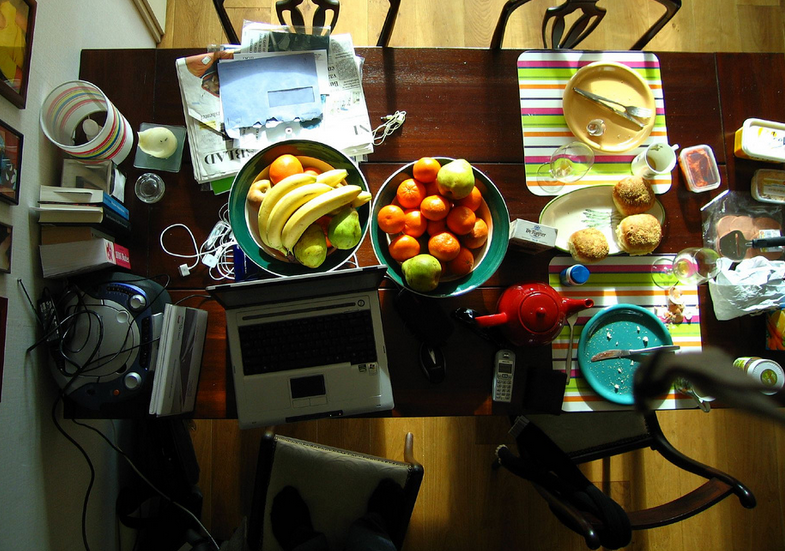


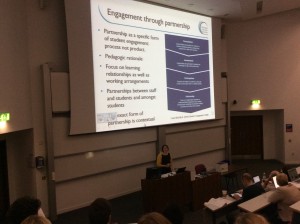
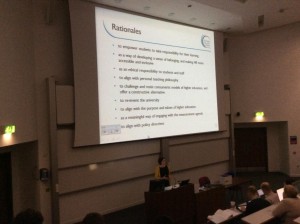
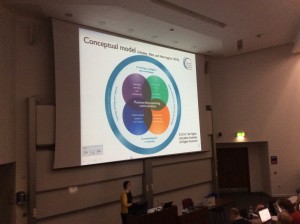
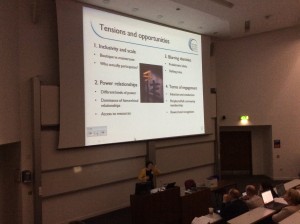




 11.15 – 1.00 – Technology in Support of Learning and Teaching (The Venue, NUSU Building)
11.15 – 1.00 – Technology in Support of Learning and Teaching (The Venue, NUSU Building)

